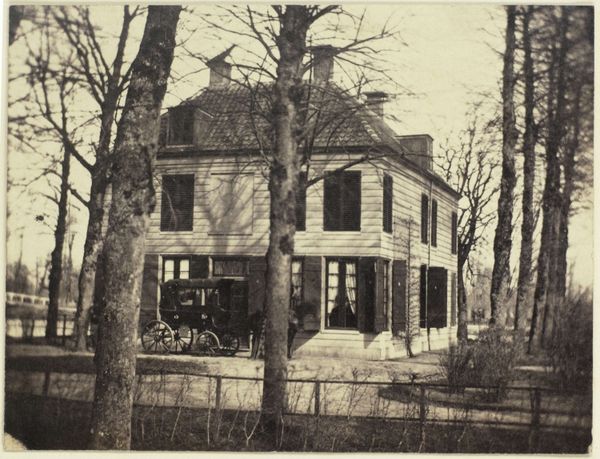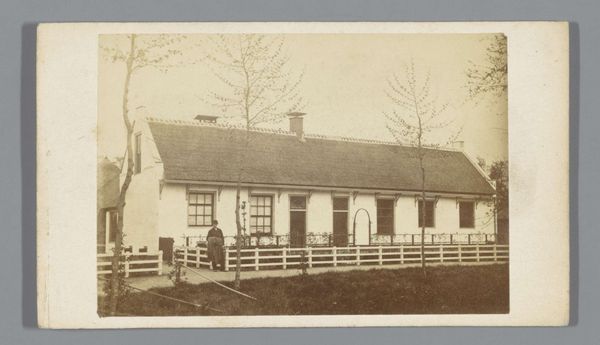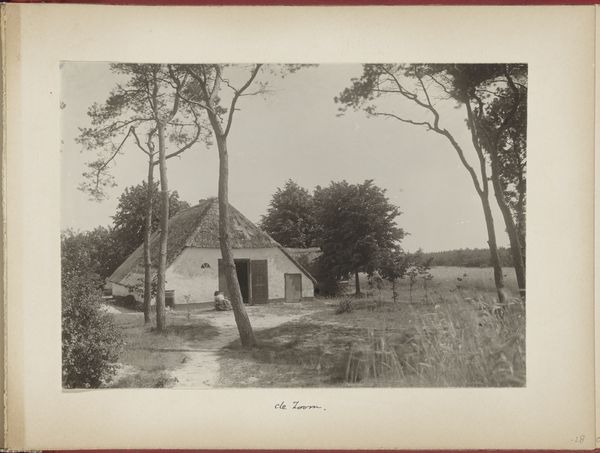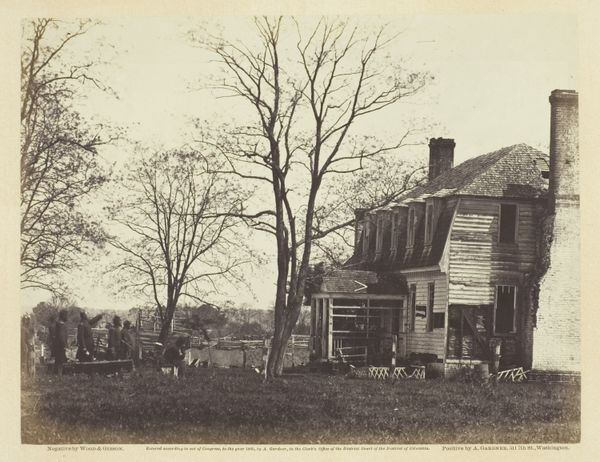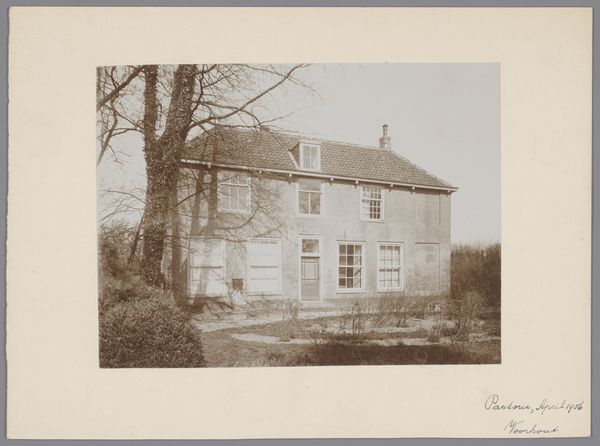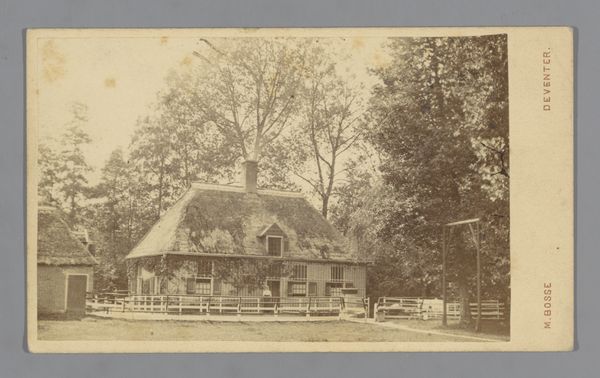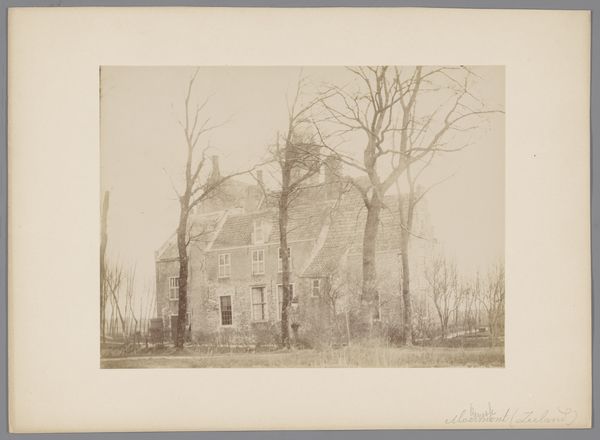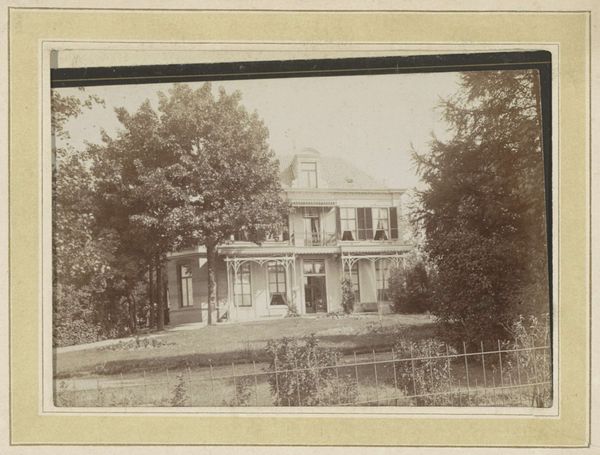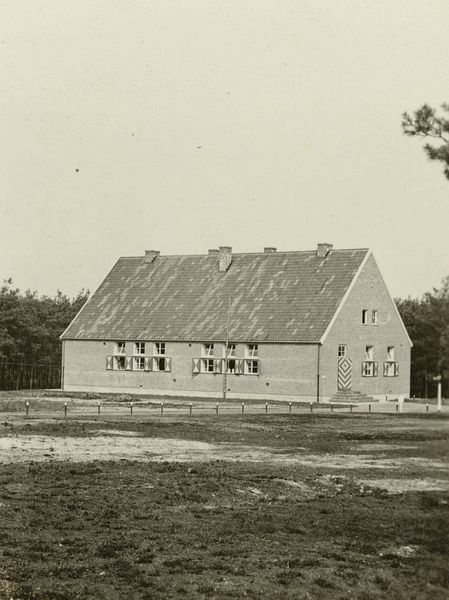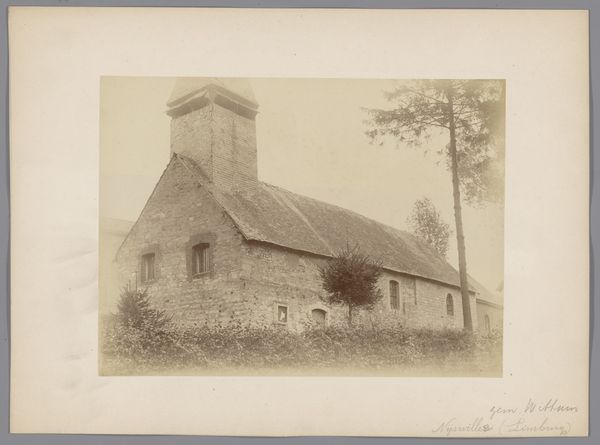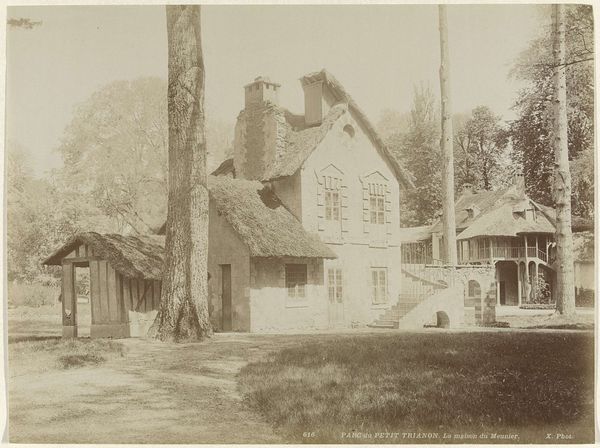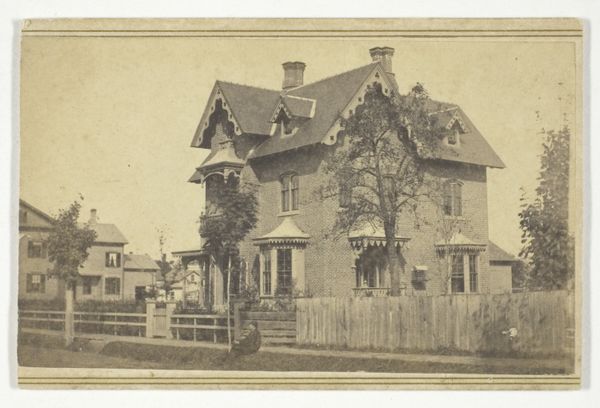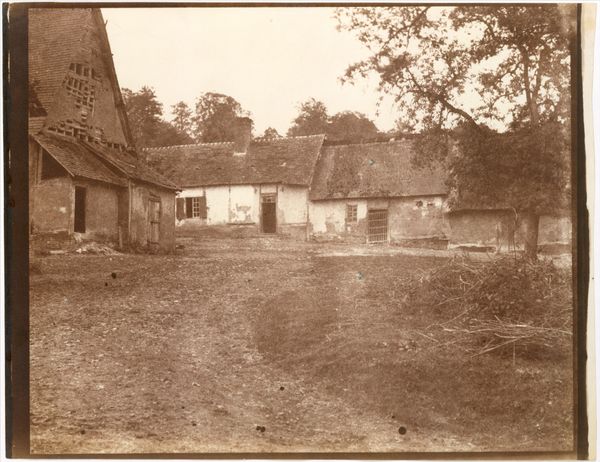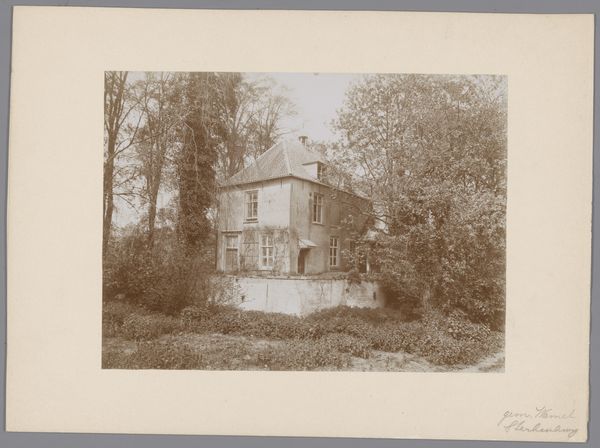
print, photography, gelatin-silver-print
#
print photography
# print
#
war
#
landscape
#
photography
#
historical photography
#
gelatin-silver-print
#
united-states
#
realism
Dimensions: 17.7 × 22.9 cm (image/paper); 31.1 × 44.7 cm (album page)
Copyright: Public Domain
Editor: This is "Dunker Church, Battle-Field of Antietam, Maryland," a gelatin silver print taken in 1863 by James Gardner. It’s… hauntingly still, despite being a photograph of a battlefield. The church seems so plain, yet it stands as a silent witness to intense violence. What do you see in this piece? Curator: It's a powerful image precisely because of that stillness. Gardner doesn't depict the battle itself. Instead, he shows us the aftermath, the way war permeates even seemingly untouched spaces. The Dunker Church, with its simple architecture, represents a community and faith, but it's also a backdrop to a devastating battle. Think about the public that first encountered this image; how do you think they would interpret the combination of these factors: religion and war? Editor: I imagine the public would focus on the war aspect. Perhaps viewing the print was one way they were encouraged to 'take part' in events, in a safe way from far away? Curator: Exactly. Photography at this time was revolutionary in bringing the realities of war to the home front. Gardner’s photograph participates in shaping public memory and influencing political sentiments about the Civil War. How does that impact your interpretation now? Editor: Knowing the context shifts the weight of the image. It’s no longer just a historical document but evidence presented to sway public perception. I hadn’t considered that photographs can be used to reinforce perspectives of trauma and the politics involved in choosing an image such as this. Curator: Precisely. It is a solemn yet pointed presentation of the event, highlighting both the setting and the consequences of such violence and what is left in its wake. It reminds us of the critical role images play in shaping our understanding of history. Editor: I agree; thanks to your insight, I now perceive its intended effects, rather than seeing the church on its surface.
Comments
No comments
Be the first to comment and join the conversation on the ultimate creative platform.
